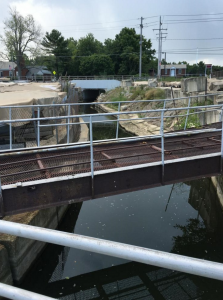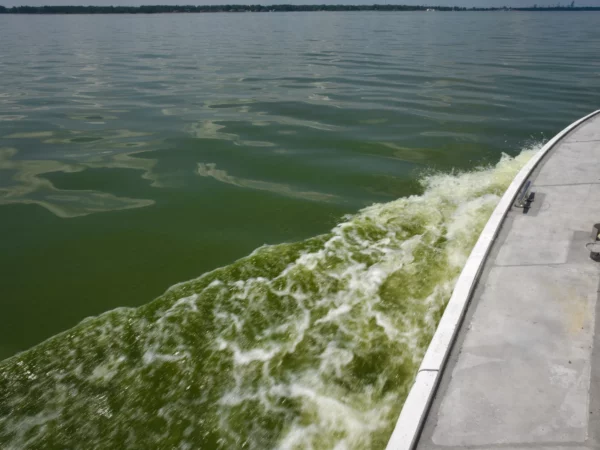
From Great Lakes Today
A big threat to the Great Lakes comes from outdated sewer systems that can carry bacteria into waterways. That can lead to closed beaches and warnings about drinking water. Now, some cities are fighting back – with trees.
In nearly 200 communities, sewer systems handle both stormwater and sewage. When it rains a lot, these systems get overloaded. And untreated water – or sewage — runs into the Great Lakes or nearby streams and rivers.
“These outflows happen up to 82 times per year at some spots in Cleveland,” says U.S. Forest Service Scientist Michelle Kondo.
There are two main solutions to this problem. There are grey projects, like updating stormwater systems. And then there’s the green.
Kondo studies the impact of Green Stormwater Infrastructure. It uses vegetation including patches of trees and shrubs to slow the water as it runs into sewers. She says trees act like giant umbrellas.
“They sort of intercept that rainfall before the rainfall can make its way to the storm sewer,” said Kondo. “They act like a sponge in soaking up that rainwater and perhaps any pollutants that come with it.”
Scientists like Kondo say green infrastructure can be more cost efficient for communities, promote more outdoor activity, and increase property values.
“Many cities really like the green approach because it comes with environmental, social, economic, and public health benefits,” said Kondo.
13 cities along the shores of the Great Lakes will be able to expand their greening projects through 2 million dollars from the U.S. EPA. The money will go to developing wetlands, creating rain gardens, and planting trees.
U.S. EPA advisor Cameron Davis says cities like Sandusky, Ohio and Duluth, Minnesota were chosen because of their size. “We’ve invested in larger cities in the past, we wanted to make sure some of the more medium sized cities had a fair shot at some of these investments,” said Davis.
But green infrastructure is not the solution for everyone, says Todd Danielson of the water utility at Avon Lake, a coastal city 18 miles west of Cleveland.
“The wastewater and stormwater mixture comes directly to this stream, to Heider Creek, and so this mixed waste water and stormwater goes into that stream, and then goes directly out to Lake Erie,” said Danielson.
With a population of 22,000, it’s the same size as several of the cities investing in greening projects. But Avon Lake is spending more than 14 million dollars on a progressive gray plan.
Danielson says that’s the best way to handle the city’s main problem – combined sewers in older homes that need separating.
“We love trees, we’d love to have more trees,” said Danielson.
“It just does not stop enough of the water from getting into the sewers. For us, the biggest issue really – a lot of it is the water coming from private property.”
Danielson adds that are still a lot of questions about creating and maintaining green projects. It’s also difficult to completely rely on vegetation, says the EPA’s Davis. “We tend to have older cities where our infrastructure – the pipes and the treatment plants, are much older and are in desperate need of revitalization,” said Davis.
But green and gray projects can work together. It’s just a balancing act, says Kondo. “Even cities that are known for taking this bold, green approach also have gray improvements going on as well,” Kondo explains.
Kondo notes that cities outside the Great Lakes region – like New York, Seattle and Minneapolis are also embracing the green.







